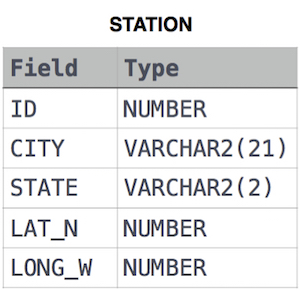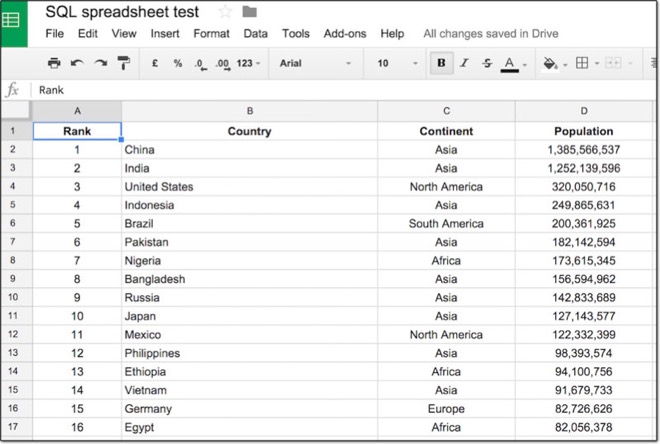Query The Names Of All The Japanese Cities In The City Table.
- Query The Names Of All The Japanese Cities In The City Table. Chicago
- Query The Names Of All The Japanese Cities In The City Table. Lyrics
This is a list of cities in Japan, sorted by prefecture and within prefecture by founding date. The list is also sortable by population, area, density and foundation date. Most large cities in Japan are cities designated by government ordinance.Some regionally important cities are designated as core cities. Tokyo is not included on this list, as the City of Tokyo ceased to exist on July 1, 1943. Query the names of all the Japanese cities in the CITY table. The COUNTRYCODE for Japan is JPN. Input Format The CITY table is described as follows.

This is the first chapter in a multipart guide to reading Japanese place names. Here we’ll cover how directions and geographic relationships and attributes are read in place names.
When the Japanese visit other countries on tours, the tour company educates the group about local manners and customs on the way. They always include a line that says that tourists represent Japan and should try their hardest to leave a good impressive.

The examples given below are by no means exhaustive! Directions 中央 (Chūō) or 中 (Naka): Central中央区 (Chuo-ku): Central Ward, one of the central wards in Tokyo and Osaka.中区 (Naka-ku): Central Ward in Yokohama and Nagoya.中央線 (JR Chūō Line): The Central Line that runs east-west through Tokyo and the western suburbs.中目黒 (Naka Meguro ): Central Meguro, a popular residential area in central Tokyo. 北 (Hoku or Kita): North北海道 (Hokkaido): Literally “North Sea Road”. Japan’s northernmost prefecture北九州 (Kita Kyushu): Literally “North Nine Provinces”.
The northernmost city in Kyushu (Japan’s third largest island).北千住 (Kita-Sen Jyu): Literally “North Thousand Living”. Kita-Senju Station is a railway station in Adachi Ward, Tokyo. It is the third-busiest station on the Tokyo Metro network. 南 (Nan or Minami): South南区 (Minami-ku Ward): South Ward, one of Yokohama’s 18 wards.南北線 (Namboku-sen): Literally “South-North” Line, a subway line operated by Tokyo Metro that runs north-south through Tokyo, from Akabane Iwabuchi Station in Kita Ward to Meguro in Shinagawa Ward at the southern terminus. Here “Nan” is read as “Nam”.
東 (Tō or Higashi): East東京 (Tōkyo): Japan’s capital. Tokyo is the eastern capital of Japan because it is east of Kyoto, which was the country’s capital until 1868 when Emperor Meiji moved the capital to Edo and renamed it Tokyo.東西線 (Tōzai Sen): Literally “East-West” Line.
Runs between Nakano Station in Tokyo’s Nakano Ward to Nish-Funabashi Station in Chiba at the eastern terminus.関東 (Kantō): “East of the Divide”. A geographic area including the Greater Tokyo area and includes seven prefectures: Gunma, Tochigi, Ibaraki, Saitama, Tokyo, Chiba, and Kanagawa. The population of Kanto amounts to about a third of the population of Japan.東銀座 (Higashi Ginza): East Ginza.
西 (Sai or Zai or Nishi): West東西線 (Tōzai Sen): Literally “East-West” Line. Runs between Nakano Station in Tokyo’s Nakano Ward to Nish-Funabashi Station in Chiba at the eastern terminus.関西 (Kansai): “West of the Divide”.
A region in the south-central area of Japan’s main island. It includes the prefectures of Mie, Nara, Wakayama, Kyoto, Osaka, Hyōgo, and Shiga西日暮里駅 (Nishi Nippori): West Nippori Station is located on the Yamanote, Tokyo Metro Chiyoda, and Nippori-Toneri Liner in Tokyo. 上 (Kami or Ue): Upper. Ueno Park cherry blossoms.
Image: Wikimedia上野 (Ueno): Upper Field. A neighborhood and train station in eastern Tokyo, known as a cherry blossom viewing destination and for its art galleries, museums and universities. It is also a major transit hub.上目黒 (Kami Meguro): Upper Meguro. An upscale residential neighborhood in central Tokyo. 下 (Shimo or Shita): Lower or Under下目黒 (Shimo Meguro): Lower Meguro. A sub-designation of Meguro.下北沢 (Shimo Kitazawa): A commercial and industrial neighborhood in Setagaya Ward, Tokyo.

Known for its many fashion retailers, cafes, theaters, bars and live music venues.宮之下温泉 (Miya No Shita Onsen): Literally “hot springs under the palace”. A popular hot spring resort destination in Hakone, Kanagawa Prefecture. 右 (U): Right右京区 (Ukyo Ku): A ward in Kyoto. Relative to the Kyoto Imperial Palace (and the Emperor who sat facing south), this ward would lie on his right. 左 (Sa): Left左京区 (Sakyo Ku): A ward in kyoto. Relative to the Kyoto Imperial Palace (and the Emperor who sat facing south), this ward would lie on his left.BONUS: To ask a cab driver to turn right or left, you can say, “右折してください” ( U-setsu shite kudasai, “Please turn right.”) or “左折してください” ( Sa-setsu shite kudasai, “Please turn left.”). 横 (Yoko): Side横浜 (Yokohama): Literally “Side Beach” Relationships and AttributesSome place names contain a word indicating its relationship to another of the same or a similar name: 本 (Hon or Moto): Original本州 (Honshu): Literally “Original Province”.
Query The Names Of All The Japanese Cities In The City Table. Chicago
The largest island in the Japanese archipelago.元麻布: Moto Azabu. A prestigious residential neighborhood in Minato Ward, Tokyo. 新 (Shin): New新横浜駅 (Shin Yokohama): New Yokohama Station新丸ビル (Shin Maru Biru): The Shin Marunouchi Building, or New Marunouchi Building, is the highest building in Chiyoda ward in Tokyo.
It replaced the Maru Biru (officially, the Marunouchi Building) which was built in 2002 to replace the original Maru Biru, which was built in 1923! 古 (Furu or Ko or Go): Old名古屋 (Nagoya): The capital city of Aichi古市駅 (Furuichi Eki): A train station on the Minami Osaka and Nagano Lines in Osaka.
長 (Naga): Long長野 (Nagano): “Long Field”. A city in the Japanese alps, west of Tokyo.長崎 (Nagasaki): “Long Cape”. Nagasaki located on the northwest coast of Kyushu. 前 (Mae): Front都庁前駅 (Tocho Mae): “Tocho” means “Tokyo metropolitan government” so “Tochomae” means “in front of the Tokyo metropolitan government (building)”. This is a station on the Toei Oedo line in Shinjuku.国会議事堂前 (Kokkai-Gijidou-Mae): “Kokkai-Gijidou” means “National Diet” so “Kokkai-Gijidou-Mae” means “in front of the National Diet”. This is a station on the Tokyo Metro Marunouchi and Chioyda subway lines.
Query The Names Of All The Japanese Cities In The City Table. Lyrics
内 (Uchi): Inside. A train on the Marunouchi Line.
Image: Wikmedia丸の内 (Marunouchi): Literally “inside the circle”. Marunouchi is Tokyo’s central commercial and financial district, located in Chiyoda between Tokyo Station and the Imperial Palace. The name originates from its location within the palace’s outer moat.
外 (Soto): Outside外堀通り(Soto Bori Dori): Literally “Outside Moat Road”. Sotobori was previously a moat surrounding Edo Castle. This canal stretched from Iidabashi Station to Ichigaya Station along the Chuo Line. “Dori” means road, route, or avenue. Sotobori Dori is a major Tokyo thoroughfare and is also known as Metropolitan Route 405.外苑前 (Gai En Mae): Literally “In front of the Outer Garden”.
Gaienmae is an upscale office, shopping and residential neighborhood located between fashionable Omotesando and upmarket Aoyama-Itchome. 高 (Taka or Kō ): Tall高松 (Taka Matsu): Literally “Tall Pine.” The prefectural capital of Kagawa Prefecture is located on the island of Shikoku in Japan.高円寺 (Kōenji: Literally, “Tall Circle Temple”. An area of Tokyo in Suginami ward, west of Shinjuku.
The neighborhood is named after old temples in the area. 大 (O): Big大阪 (Osaka): “Big Slope”.大田区 (Ota Ku): “Big Field Ward”. One of Tokyo’s 23 wards.大森 (Omori): “Big Forest”.
How can the answer be improved? Battles of Prince of Persia; Warrior Within; The Two Thrones; Prince of Persia Reboot. Stories and Secrets; Prince of Persia; The Fallen King; Epilogue; Characters. Prince of Persia. Category:Prince of Persia (2008) Enemies; S Category:Sands of Time Enemies; Shadow Man; T Category:Two Thrones Enemies; W. The following category page is for articles relating to the enemies in Prince of Persia: Warrior Within. Prince of persia warrior within enemies.
A train station in Ota Ward, Tokyo operated by East Japan Rail. 白 (Shiro or Haku): White目白駅 (Me Jiro Eki): “Me” means “Eye”, Mejiro literally means “White Eye Station”. The name, Mejiro, comes from the Mejiro Fudo Temple which is one of the Five Color Edo Fudo Temples (Goshiki Fudo).As explained by (where you can read translated Japanese ghost stories and tales of the weird and strange): “Five temples stand guard at strategic stations around the city of Tokyo, each at different points on a pentagram. Inside these five temples are five statues of the god Fudo; each statue has eyes of a different color, completing a magical circle of protection that guards the city from harm and ensures its prosperity.
This mystical circuit is called the Goshiki Fudo—the Five Fudo Temples—and still protects Tokyo to this day.”白山駅 (Haku San Eki): “White Mountain Station”. A station on the Toei Mita subway line.
黒 (Kuro): Black目黒 (Meguro): Literally “black eye”. One Tokyo’s 23 wards, a, and a train station all share this name. 赤 (Aka): Red赤羽橋 (Akabane Bashi): Literally “Red Feather Bridge”. “Bashi” means bridge. A subway station on the Toei Oedo line in Minato Ward, Tokyo.赤坂見附 (Akasaka Mitsuke): Akasaka means “Red Slope” and “Mitsuke” means “castle gate,” where the gate keeper would keep enemies from entering the castle. This is a subway station on the Ginza and Marunouchi lines in Minato Ward, Tokyo.
青 (Ao): Blue青山 (Aoyama): “Blue Mountain”. One of Tokyo’s most expensive residential neighborhoods, located in northwestern Minato Ward.In the next chapter, we will cover kanji related to administrative entities and geographic features (like 山 san or yama, mountain and 川 kawa).